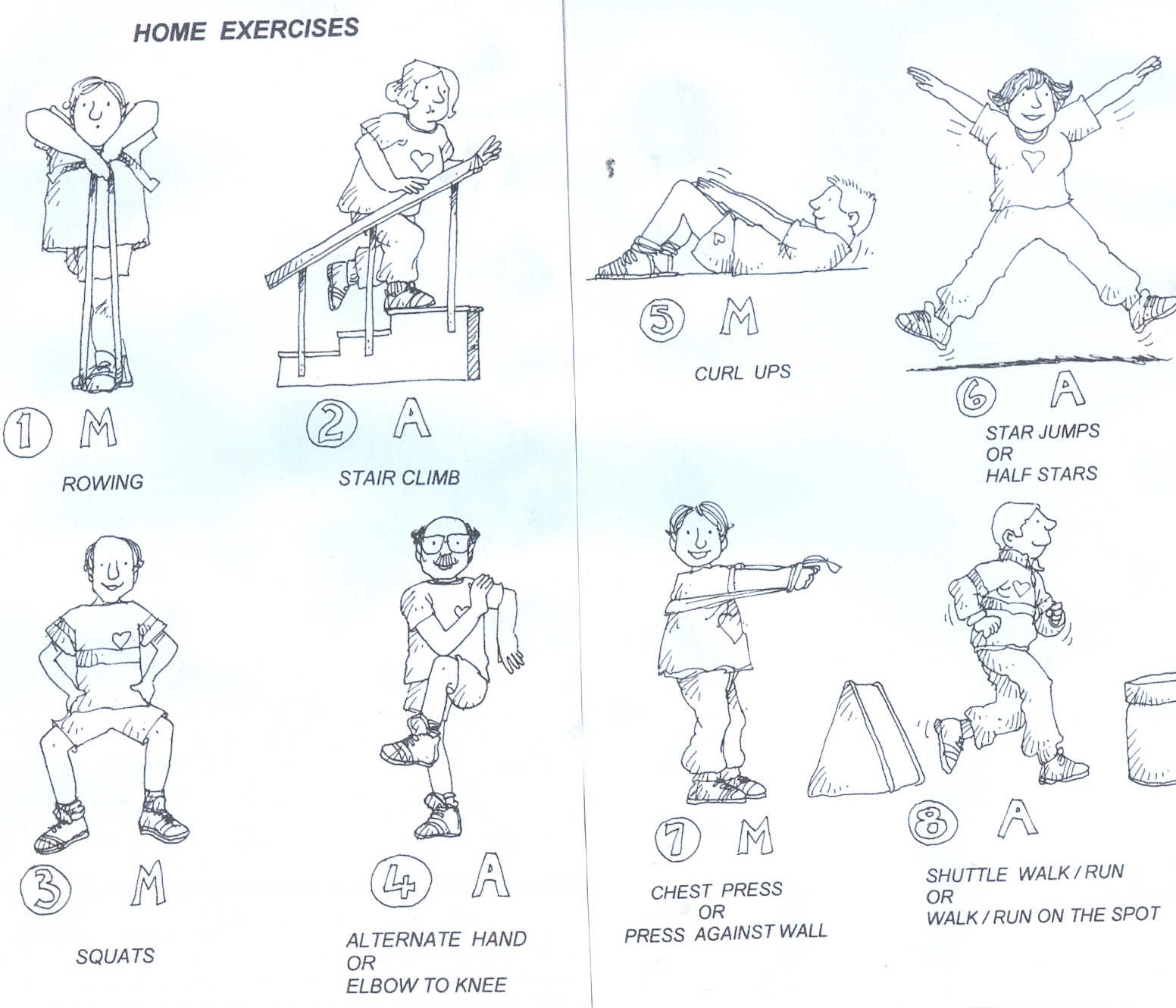WHAT TYPE OF EXERCISE?
Aerobic or isometric?
Nearly all exercise involves a mixture of aerobic and isometric effort though one or the other usually predominates. Most gym fitness training programmes use a mixture. The recommendations of the Department of Health were updated in 2005 to include “muscle-strengthening activities on 2 or more days a week work all muscle groups (legs, hips, back, abdomen, chest, shoulders and arms)”
We humans are not all born with the same balance of slow twitch and fast twitch muscle fibres. Although the average is around a 50:50 balance, some people inherit a pattern in which one type predominates over the other by anything up to about 70:30 split. As mentioned before, those born with a predominance of slow twitch fibres will make better endurance athletes while those otherwise endowed make better sprinters. Specialist training can change the balance somewhat but a born marathon runner will never make a champion sprinter.
In the gym
Now that we are allowed back in, you will find a bewildering number of exercise types on offer in your local gym or sports centre.. These are some examples but the list is not comprehensive::
1. “Cardiovascular” – this includes mainly aerobic exercise such as cycling on an ergometer, walking or running on a treadmill, skipping, aerobic dance and any other exercise designed to raise the heart rate and make you thoroughly short of breath.
2. “Bums and tums” – aimed mainly at young to middle aged women concerned about their body image, this consists of a mixture of aerobic and isometric exercise concentrating on the abdomen, buttocks and thighs. Crunches, squats and jogging may be included.
3. “Pilates” – an exercise system involving a mixture of mental concentration, economy of movement, building up core strength and breathing control. This may use free standing exercise or weights and pulleys.
4. “Body balance” – uses a mixture of yoga, tai-chi and Pilates to improve core strength, relax the mind and enhance flexibility.
5. “Spinning” – is group cycling under the direction of an instructor who changes the load and speed through the session – mainly aerobic. Can be exhausting!
6. “Aquarobics” – exercise in the swimming pool which uses the resistance of the water to exercise different muscle groups. It is particularly suitable for those with lower limb problems. They can be helped by the support provided by the flotation environment and might be unable to exercise without it.
7. “Calisthenics” – a variety of body movements, often rhythmical, generally without using equipment or apparatus, thus in all essence body-weight training. They are intended to increase body strength, body fitness, and flexibility, through movements such as pulling or pushing oneself up, bending, jumping, or swinging, using only one’s body weight for resistance.
8. “Zumba” – a form of aerobic dance with varying rhythms and intensity which can be adapted to all age groups.
9. “Boxercise” – an exercise class based on the training concepts which boxers use to keep fit. Classes can take a variety of formats but a typical one may involve shadow-boxing, skipping, hitting pads, kicking punch bags, press-ups, shuttle-runs and sit-ups.
10. Etc, etc. The possible combinations of exercise are infinite and the effects of one form compared with another depend on the balance of aerobic, isometric and flexibility exercises. They are all good so if you want to use the gym and don’t find it too boring just choose that or those which you will enjoy. There is no greater disincentive to sticking with a programme than not wanting to be there! And there is no evidence that one sort of exercise class is any better or worse than any other – whatever the individual adherents may say.
Home exercise
If you wish to make up your own circuit I suggest that you alternate the stations between “cardiovascular” and “MSE – muscular strength and endurance”. You don’t need to go to a gym to do this – you can do it at home with the help of your staircase, a pair of dumbbells or “therabands” – thick elastic bands for straining against. This weeks illustration shows a sample.
If you are new to circuit training, start with perhaps five repetitions of each exercise and perform the circuit three times. This can be repeated three four times weekly and the number of repetitions increased gradually to 20 or 30. The aim should be to reach about 30 to 45 minutes per session.
An ideal addition to any training regime is taking regular brisk walks.
My personal preference is for competitive sports or outdoor exercise. Team sports have the disadvantage of the need to find a number of like-minded individuals to join you. You probably need to belong to a specific sports club. Running, swimming and cycling can be performed in groups or on your own and have the great advantage of the convenience of being fitted in with whatever else is going on your life. Just choose what exercise(s) suit you best and which you enjoy enough to want to continue in the long-term. If it gets you moving and out of breathe it is doing the business.
PS
I have a link for you – The Glow Up Challenge – https://thenfrw.com/glow-up-challenge/
Try it – packed with a variety of advice on the use of lifestyle changes to make the best you!
Subscribe to the blog
Categories
- Accelerometer
- Alzheimer's disease
- Blood pressure
- BMI
- Cancer
- Complications
- Coronary disease
- Cycling
- Dementia
- Diabetes
- Events
- Evidence
- Exercise promotion
- Frailty
- Healthspan
- Hearty News
- Hypertension
- Ill effects
- Infections
- Lifespan
- Lipids
- Lung disease
- Mental health
- Mental health
- Muscles
- Obesity
- Osteoporosis
- Oxygen uptake
- Parkinson's Disease
- Physical activity
- Physical fitness
- Pregnancy
- Running
- Sedentary behaviour
- Strength training
- Stroke
- Uncategorized
- Walking


